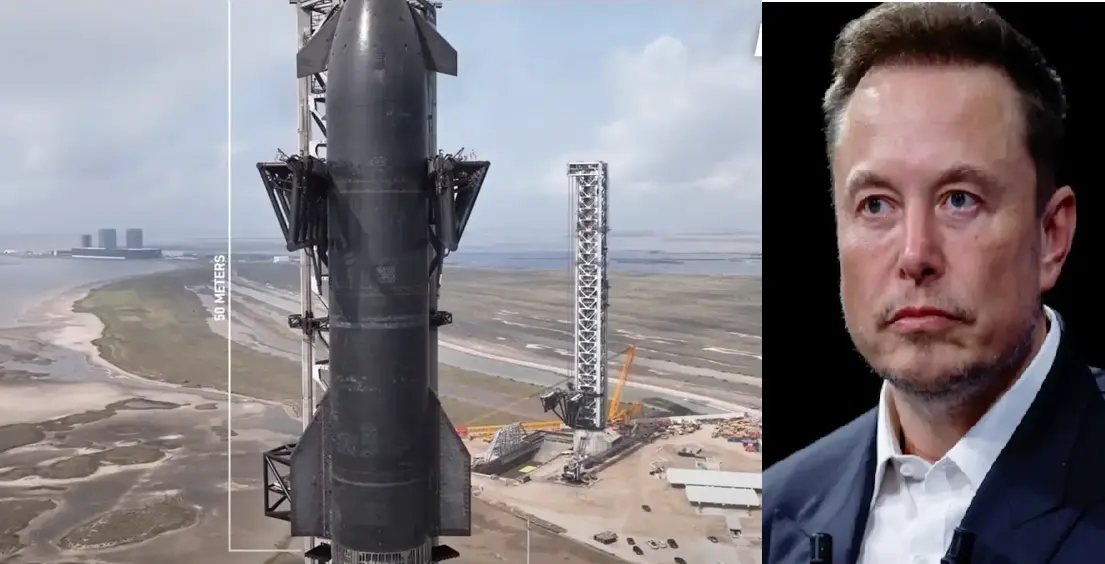
Elon Musk’s Starship program suffered another setback as its ninth test flight ended in failure
SpaceX Elon Musk Starship, the most powerful rocket ever built, is central to Elon Musk’s vision of making humanity a multi-planetary species. However, the latest test flight on May 27, 2025, ended in failure when the upper-stage Starship disintegrated during re-entry over the Indian Ocean.
This marks the third consecutive failure in 2025, raising concerns about technical challenges, regulatory scrutiny, and SpaceX’s ambitious timeline for Mars colonization. Despite setbacks, Musk remains optimistic, emphasizing that each test provides valuable data for future improvements.
Financial Losses and Investor Impact
Total Cost of Starship Development & Launch
SpaceX has invested over $5 billion in the development of Starship, including R&D, manufacturing, and test flights. Each Starship launch costs approximately $2 billion, with reusability expected to bring costs down in future missions.
Key Investors & Their Losses
SpaceX is privately funded, with major investors including:
- Elon Musk (owns 42% of SpaceX)
- Fidelity Investments
- Google & Alphabet Inc.
- Baillie Gifford
- Andreessen Horowitz
While investors have seen short-term losses, SpaceX’s valuation remains strong, exceeding $180 billion. The company continues to attract funding for future Starship missions.
What Went Wrong in the Latest Test Flight of Elon Musk Starship?
Fuel Leaks and Loss of Pressure
- The spacecraft suffered significant fuel leaks while in orbit, leading to a loss of internal pressure and attitude control.
- This caused the vehicle to spin uncontrollably, making re-entry impossible.
Payload Deployment Failure
- The payload bay door malfunctioned, preventing the release of a dummy Starlink prototype payload.
- This failure highlights design flaws that SpaceX must address before future missions.
Heat Shield Performance
- Unlike previous flights, heat shield tiles remained intact, marking a small improvement.
- However, structural integrity issues led to the spacecraft’s disintegration during descent.
NASA’s Involvement & Trump Administration’s Role
NASA’s Investment in Starship
NASA has awarded SpaceX $2.9 billion under the Artemis program to develop Starship as a lunar lander. The agency remains committed to using Starship for Moon and Mars missions, despite recent setbacks.
Trump Administration’s Influence
During Trump’s presidency, NASA’s budget saw increased funding for human space exploration, including $7 billion for lunar missions and $1 billion for Mars-focused programs. Trump’s administration also relaxed regulations, benefiting Starship’s development.
Musk’s Response & Future Plans
Despite the failure, Musk remains committed to SpaceX’s goal of making life multiplanetary. He is expected to deliver a presentation titled “The Road to Making Life Multiplanetary”, outlining plans to overcome recent setbacks.
Regulatory & Industry Impact
- The FAA reported no injuries or damage to public property and is investigating the cause of the failure.
- SpaceX plans to increase launch frequency, aiming for one launch every 3-4 weeks to accelerate development.
What’s Next for Starship?
Musk emphasized that each test flight, successful or not, contributes valuable data for refining the fully reusable rocket system. The company will continue iterative testing to improve heat shield durability, fuel efficiency, and re-entry stability.
Conclusion
While the latest Starship failure is a setback, SpaceX remains committed to advancing space exploration. With rapid testing cycles, regulatory approvals, and engineering improvements, Musk’s vision for Mars colonization is still within reach.
1 thought on “Elon Musk Starship: Billion- 5 Billion Dollar Setbacks, Investor Losses, and the Future of SpaceX’s Mars Mission”